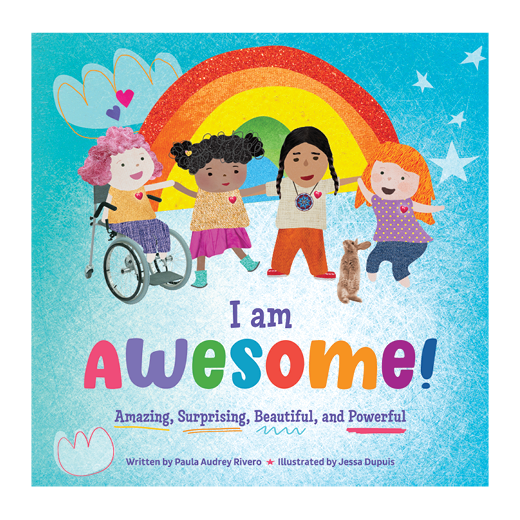Emotional Regulation: Learning The Big and Bad Feelings
For over a decade of creating awesome at Qi Creative, we’ve prefaced our philosophy with an important opening statement:
We all face challenges. They are part of life.
Through our strengths-based approach to creating awesome, we celebrate strengths, talents, and successes of all sizes, because we believe that celebrating creates a powerful momentum of energy and hope even when times are tough.
However, we also want to acknowledge our right to sadness, for those days when it is difficult to find our awesome. In whatever way sadness or discontent manifests in our lives, ignoring those feelings and emotions when they bubble up can mean not giving our hearts and souls attention to the help it is really searching for.
This blog is in honour of our discontent.
Try to See all Emotions as part of Life’s Rich Tapestry
A young girl pouts with her hands in a ‘thumbs down’ gesture of disapproval.
In our society the positive, or ‘good’ emotions such as happiness, love, and joy, are revered and celebrated above all else. However, we are complex beings, not designed to live life in a state of perpetual happiness, joy and peace. In many ways, striving for this unrealistic way of being, not only hinders our emotional growth and development, but is ultimately, an unattainable goal.
The more uncomfortable emotions, such as sadness, fear, anger, or jealousy, are often encoded and decoded as ‘bad’, and thus to be avoided at all costs. It is in part, this polarized way of thinking about the more challenging emotions that causes many of us intense distress.
To illustrate, if we judged the daytime as ‘good’, light and happy, and the nighttime as ‘bad’, dark and sad, we would spend all our evenings wishing it were daytime, or trying to avoid the night entirely by going to bed at sunset. We would miss out on many beautiful evenings. We could also argue that the weeds that grow in our gardens amongst the pretty (happy) flowers that we have planted are also beautiful, some of them even flower, but it is the value that we communicate on them that labels them weeds, and thus unwanted.
So, as in the practice of meditation and mindfulness, try not to pass judgement or give positive or negative values to your emotions, but rather acknowledge the thoughts and feelings and let them pass.
Identifying Feelings
One of the main stumbling blocks that many of us have with addressing our more uncomfortable feelings is actually identifying them and assessing where they are coming from. The same applies to the more positive emotions: if you wake up feeling exceptionally happy and content, it is still helpful to assess why.
A further confusing factor is that it is possible to feel several conflicting emotions about a life situation at the same time. For example, a young person leaving home for the first time may feel excitement, fear and sadness for the past simultaneously.
Furthermore, developments in emotional research suggest that our emotions are much more complex than many of us realize:
“ … rather than classifying emotions on a single continuum from positive to negative, we argue that each emotion contains some degree of both negativity and positivity.”
Due to the pressure put upon us by society, and ourselves: sadness, for example, is often seen as an emotion to be avoided. If we feel sad, there may be a tendency to try and talk ourselves out of it, or ‘put on a brave face’ or appear to be happy to others. Many people may express feelings of frustration or anger when, in fact, they are actually sad or hurt by something.
One of the main challenges in managing all your myriad of emotions is actually identifying and acknowledging them.
How to Identify your Emotions
There are several different ways that you can begin to identify your emotions. Once you start being able to identify your feelings, then—very much like practicing any skill, you will get more insight and understanding will follow.
Here are a few tips that you might like to try:
Two lattes and a pair of glasses sit on a wooden surface, with a placard nearby saying “Inhale the future, exhale the past”.
Try to not put any judgement on your feelings or yourself. Simply acknowledge the emotion.
Avoid addictions if at all possible. Many people turn to alcohol, drugs, cigarettes, extreme exercise programs, work or TV binge watching to try to suppress unwanted feelings.
Practice being ‘still’ and quiet. Sit with your feelings and thoughts for a while. Although this may be uncomfortable initially, it will get easier and will help you identify how you are feeling, and maybe even why. Learn meditation, or in the case of HeartMath, heart-focused breathing; it really helps to ‘calm’ the mind and emotions.
Be aware of your own physical responses to your emotions. These may vary from person to person, however, stomach turning can indicate excitement or anxiety. Sweaty palms and racing heartbeat may indicate fear, frowning or becoming tearful are usually associated with sadness or confusion, for example. Getting to know your own physical responses to each emotion can greatly assist you in identifying them, from your head to your toes.
Talk to a friend. Talking to a friend, family member or therapist can help identify and process emotions. Often when you hear yourself describing a feeling or a situation, you are identifying and processing during the conversation. Having a listening ear and reflective feedback can really help.
Be aware that feelings are temporary, happy emotions will ebb and flow, as will more challenging ones, it is all about balance.
Write or journal: Similar to ‘talking it out’, writing your feelings in a letter or a text message draft on your phone (even if it is never sent) or journaling can be very beneficial too.
Take some time out in nature. Go for a walk in the forest or overlooking a nice body of water, take in the scenery and connect with the beauty of nature - and yourself.
Why Sad is not Bad
It’s important to say here that if you are feeling sad most of the time, or your unhappiness is interfering with the ordinary tasks of everyday life then it is important to seek professional help.
However, more challenging emotions often arise to teach us a little something about ourselves or our life situation. Brushing our sadness under the rug continuously does not mean that it will go away, more likely it will fester and build up, with the risk of eventually expressing itself in the form of a more serious mental health challenge such as anxiety or depression. Interestingly, the same holds true for the suppression of positive emotions too.
It is extremely important that we set aside a little time to listen to our sadness. See the sadness as your inner child and be gentle with that emotion.
According to Kahn, a psychotherapist, sadness can be an indicator of something that we would like to change and that change may lead us towards a more rewarding and fulfilling life. Sadness can be our subconscious mind telling us that maybe our relationship, or our job, for example, is not quite right for us.
Final Words
It is okay to not be okay sometimes so embrace the sadness, anger, guilt or fear …just not for too long. Hold it, examine it, feel it, indulge it and then let it go and learn from it.
In fact, begin today to learn how to embrace, acknowledge and feel all the emotions that make each of us uniquely AWESOME. Smile, laugh, cry and shout sometimes, feel and honour those emotions to the fullest - we’re only human after all!
References
An, S., Ji, L. J., Marks, M., & Zhang, Z. (2017). Two Sides of Emotion: Exploring Positivity and Negativity in Six Basic Emotions across Cultures. Frontiers in psychology, 8, 610. https://doi.org/10.3389/fpsyg.2017.00610
Chapman, B. P., Fiscella, K., Kawachi, I., Duberstein, P., & Muennig, P. (2013). Emotion suppression and mortality risk over a 12-year follow-up. Journal of psychosomatic research, 75(4), 381–385. https://doi.org/10.1016/j.jpsychores.2013.07.014
“Even a happy life cannot be without a measure of darkness, and the word happy would lose its meaning if it were not balanced by sadness.””







